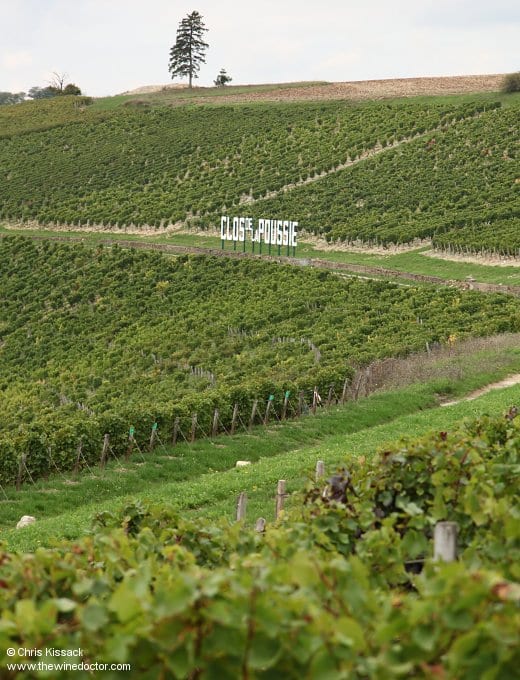Oxfordian Limestone
As I have already indicated in my introduction to Central Vineyard Geology, the Oxfordian stage lasted from 163 to 157 million years ago. Nevertheless, because most of the Oxfordian rocks around Sancerre and Pouilly-Fumé date from the very end of the Oxfordian stage, or the transition between the Oxfordian and Kimmeridgian stages, most Oxfordian rocks scattered around the main Central Vineyard appellations are about 157 million years old.
There are some older Oxfordian rocks of relevance to the Central Vineyards though, and these are worth a quick mention. These older limestones lie on the right bank of the Loire.
On the Right Bank
The further south from Pouilly-sur-Loire you go the older the limestones are, and about 15 kilometres to the south we find the town of La Charité-sur-Loire and its vineyards, the Côtes de la Charité, and beneath the surface soils here the bedrock is Calcaire à Entroques. The Calcaire à Entroques is an older Oxfordian layer best associated with the vineyards of Burgundy, where it is recognised as being a good terroir for Chardonnay. It is surely no coincidence that Alphonse Mellot have both Chardonnay and Pinot Noir planted here, for their Les Pénitents cuvées.
Moving north from La Charité-sur-Loire, tracking the course of the Loire towards the vineyards of Pouilly-Fumé, the various Oxfordian strata we cross are progressively younger. Thankfully these limestones largely do not concern us, as there are no vineyards planted here, but for the sake of completeness these other limestones are (from older to younger, or from south to north) the Calcaires fins et glauconieux de Bertins, the Calcaires fins à oolites et bioclastes de Narcy and the Calcaires oolitiques de La Charité. The next layer is of interest though, as it is the Calcaires lités inférieurs, which also appears on the left bank of the Loire, deep beneath the vineyards of Sancerre. Continuing our journey northwards we cross the Calcaires de Mézières, Calcaires de Bazarnes and the Calcaire de Tonnerre. This last stratum is of interest, firstly because it touches the very southern parts of the Pouilly-Fumé vineyard but also because, looking much further afield, it is found beneath the vineyards of Chablis. Lying superior to this layer, and just a little further north into the southern section of the Pouilly-Fumé vineyard, are the Calcaires de Villiers (often referred to, especially in older texts, as Calcaire à Astartes). This layer straddles the Oxfordian-Kimmeridgian boundary, and is thus where this Oxfordian-specific exploration of the right-bank stratigraphy must end.
On the Left Bank
On the left bank, beneath the vineyards of Sancerre, things are perhaps a little simpler. Here the older limestones lie to the east, and younger to the west. The oldest Oxfordian limestone layer is the aforementioned Calcaires lités inférieurs, equivalent to the same layer on the right bank. Moving westwards across increasingly younger limestones, there are the Calcaires crayeux de Bourges, and then the Calcaires lités supérieurs, which straddle the Oxfordian-Kimmeridgian boundary, and so again this is where this Oxfordian-specific exploration of the right-bank stratigraphy must end.

